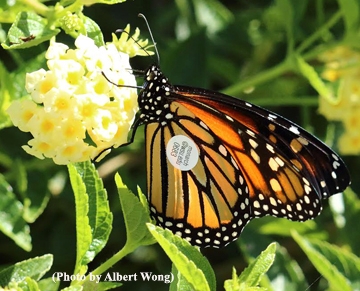
It may have flown hundreds of miles from the Pacific Northwest, and Washington State University entomologist David James is eager to know where you found it.
James, an associate professor at Washington State University, studies the migration routes and overwintering sites of the Pacific Northwest Monarch population, which are thought to overwinter primarily in coastal California but also in central Mexico. He spearheads a Monarch-tagging project in which volunteers--primarily inmates at the Washington State Penitentiary, Walla Walla--rear and release the butterflies.
“There are currently more than 2000 monarchs (Danaus plexippus) in the Northwest that are carrying tags and many of these I have good reason to believe are in the general Sacramento to San Francisco area," James said this week.
“Last Friday, Oct. 10, one of our tagged Monarchs was seen near San Mateo--this one was tagged 10 days earlier in Applegate, southern Oregon. It had flown 330 miles! Then a few weeks ago (Sept. 27) another was seen at Glen Ellen, Calif. This one had flown a whopping 600-plus miles from Yakima in central Washington."
James explained that “we have very little data to support the notion that they all fly to coastal California for overwintering. Before our project there was just a single tagged Monarch from Washington recovered in California. Recent observational evidence suggests that some PNW Monarchs fly in a more southerly-south-easterly direction, away from California and we speculate these may end up in Mexico! We have had one tag to date that supports this idea...a monarch released at Walla Walla turned up at Brigham City in Utah.”
Because the summer Monarch population in Washington, Oregon, British Columbia and Idaho is so small, James and his team have had to resort to mass breeding of Monarchs for tagging.
“We obtain wild females in Washington and rear their progeny,” the entomologist said. “Much of the rearing is done by inmates at Walla Walla Penitentiary.” He described it as “a very successful program for the butterflies and the prisoners! “
James is also increasingly using citizen scientists to rear and tag as well. See more details of recent recoveries and information about the program at the program's Facebook page.
You don't need a professional camera to capture an image. James said that "the two California recoveries we have had so far were both confirmed by cell phones or regular cameras! This technology definitely aids recoveries. It's so easy to take a high quality 'snap' that can be used to determine the tag details."
“I am confident there are a number of tagged Monarchs currently in your area," James told us. "We are actually still releasing them here in Washington, so the opportunity to see one will persist for a few weeks yet. “
He figures they are "likely heading to the overwintering sites at Bolinas, Santa Cruz and Pacific Grove--maybe further south as well.”
So, if you see a WSU-tagged monarch, take a photo and let WSU know. Contact: david_james@wsu.edu or the Facebook page.
For more information about the project, see WSU's Monarch Butterfly news story.
Attached Images:
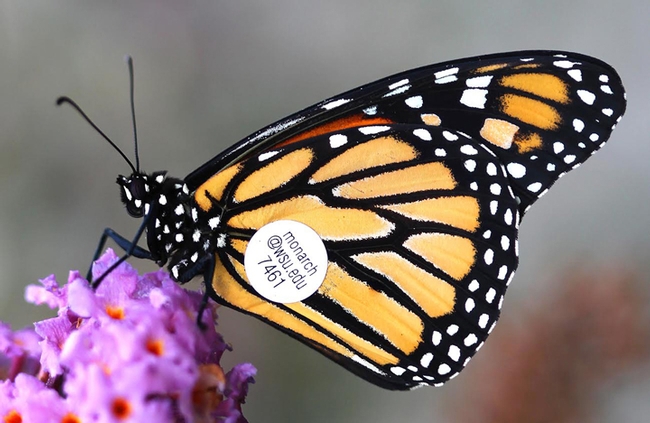
Close-up of a tagged Monarch butterfly. (Photo by David James, entomologist at Washington State University, Pullman, Wash.)
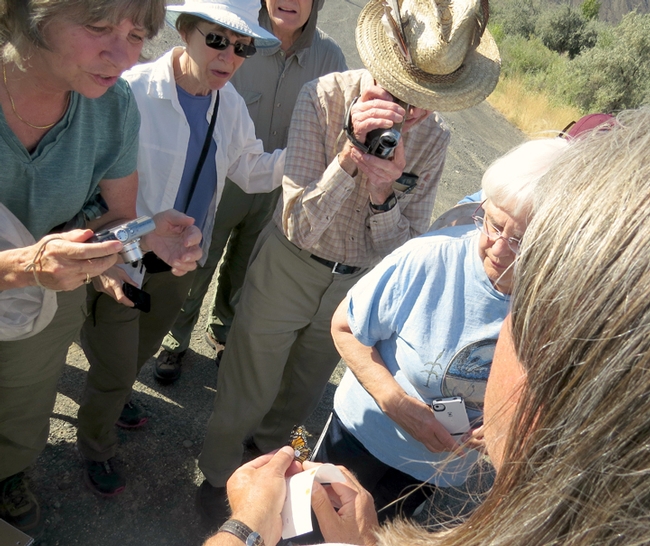
Entomologist David James demonstrates how to tag a Monarch. This image was taken at a meeting of the Washington Butterfly Association at a Monarch breeding site near Vantage in central Washington on Aug. 23 2014.
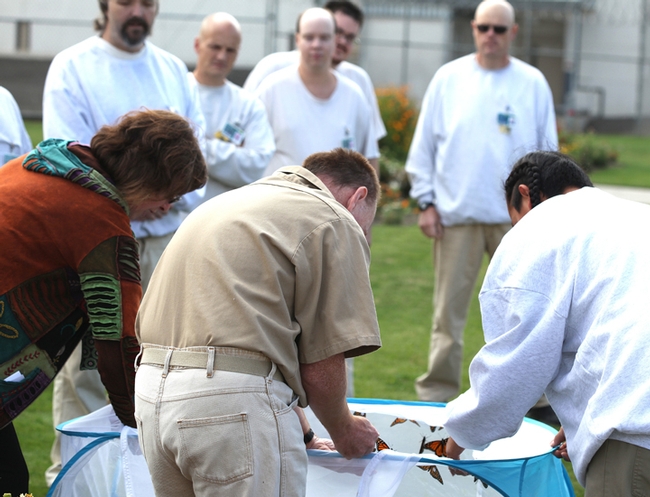
Inmates at the Washington State Penitentiary, Walla Walla, rear most of the Monarchs. The photo, taken during a WSU Media Day, shows the release of the butterflies. (Photo by David James)
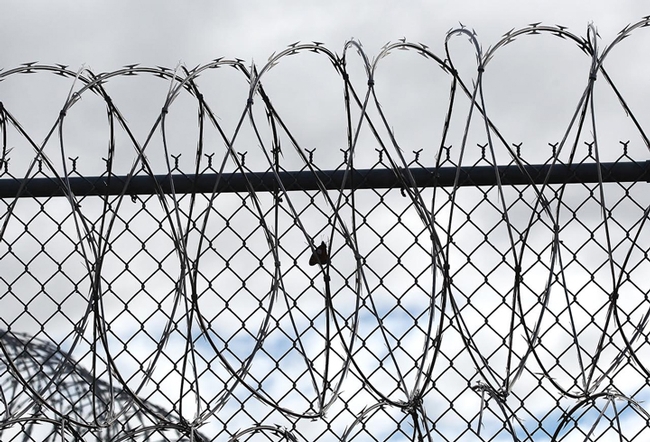
This Monarch butterfly, reared by inmates at the Washington State Penitentiary, heads for freedom. (Photo by David James)